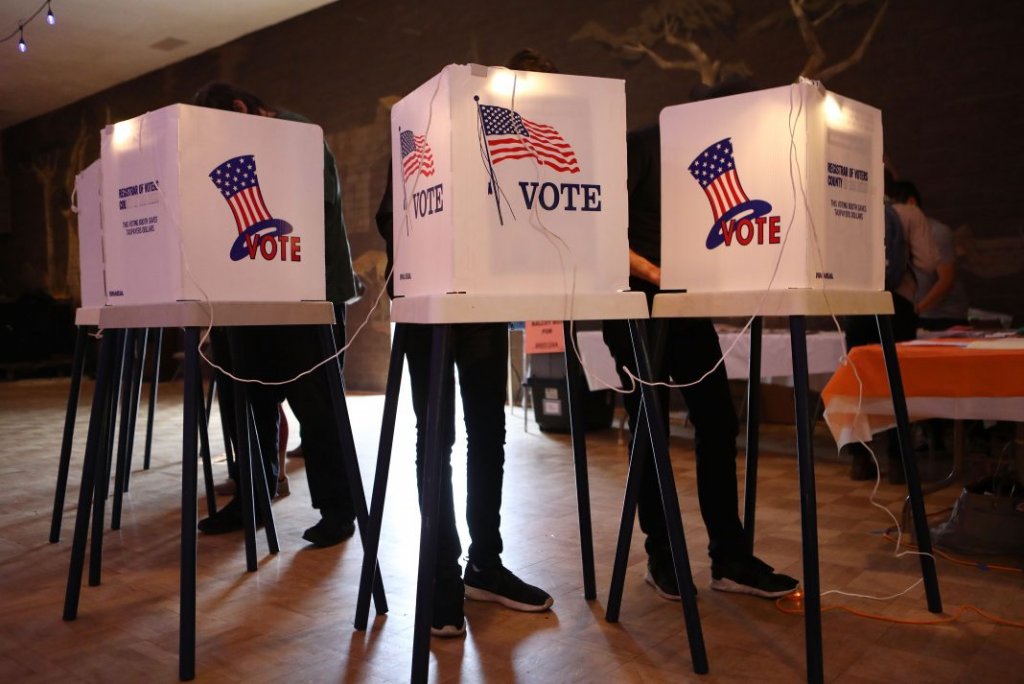| Sean Coletti ∙ Idaho Statesman |
In 2011, Judge B. Lynn Winmill decided the case Idaho Republican Party vs. Ben Ysursa, concluding that “because the open primary permits substantial numbers of independent voters, as well as voters associated with other political parties, to ‘cross over’ and participate in the Republican Party’s selection of its nominees,” the open primary “violates the Party’s constitutional guaranteed right to freedom of association.” And thus was born Idaho’s closed primary.
”It’s past time to change the system and end the political primary game in Idaho.
However, this reasoning for rejecting an open primary has not aged particularly well. The reality is that not much has changed — it’s nobody’s secret that “substantial numbers of independent voters, as well as voters associated with other political parties” still cross over and participate in the Republican Party’s selection of its nominees. The only difference is that they have to register as an “R” first.
It’s past time to change the system and end the political primary game in Idaho. We would start with a 2008 U.S. Supreme Court case not considered by Judge Winmill, entitled Washington State Grange v. Washington State Republican Party.
In Grange, the Court looked at a Washington primary system putting all candidates for partisan offices, regardless of party, on the same ballot. These candidates declare their party of “preference,” or “independent status.” That “preference” is then shown on the primary ballot. Voters select any candidate listed on the ballot, regardless of party preferences of the candidates or the voter.
The candidates with the highest and second-highest vote totals advance to the general election, again, regardless of party preference. Thus, the general election may pit candidates with the same party preference against one another.
The Republican Party in Grange obviously did not like this idea, arguing that this system violated its associational rights by usurping its right to nominate its own candidates and forcing it to associate with candidates it did not endorse. The Court disagreed, stating that (in contrast with the Idaho case) the Washington primary actually did not choose parties’ nominees; instead, it winnowed the number of candidates to a final list of two for the general election.
The party also argued that voters would improperly assume that parties associate with and approve of the candidates with the “R” or “D” after their names. The Court again disagreed, stating that there was no basis for claiming that a candidate’s party “preference” would be interpreted as the party’s nominee. The Court also said the ballot could include a prominent disclaimer that the party “preference” reflects only the self-designation of the candidate and not an official endorsement by the party.
The legal arguments behind the Idaho case leading to the closed primary fail if Idaho were to follow the lead of the Grange case and make primaries about picking the top candidates for a position instead of party “nominees.”
And even better, Alaska has recently adopted a ballot measure creating not a “top-two,” but a “top-four” primary system modeled in part on the Grange case. The top four candidates in the primary, regardless of party preference, are placed on the general election ballot. The general election is decided using ranked-choice voting. Voters rank the candidates, one through four. If no candidate wins a majority in the first round, the last-place finisher is eliminated and those ballots are re-allocated to the voter’s next-choice candidate, until one wins a majority. This top-four model allows for greater variety in the general election and more opportunity for minority party-preference candidates to be represented in the general.
The benefit of such a system is that it increases the likelihood of (a) all voters being heard, and (b) candidates with the broadest appeal to voters, rather than more factional candidates, winning the election. When candidates seek not a party nomination but to be a top-four vote-getter, they broaden their message and appeal, also leading to broader-based governing upon election.
And what, you might say, would be the point of parties then? They would still be a means for like-minded individuals to join and push platform issues and promote candidates for elections. The difference, however, would be that the ballot would not be for choosing party nominees, it would be for choosing the top vote-getters for a particular office, regardless of party.
This is not just a pipe dream — it’s happening in Alaska right now. Should it happen in Idaho?





